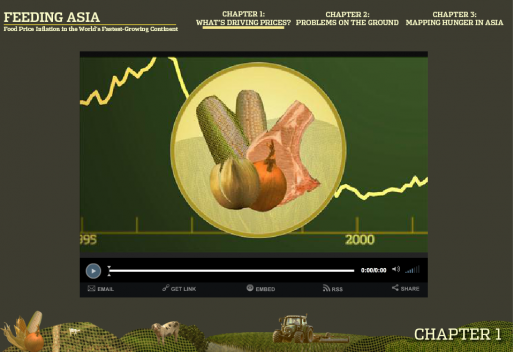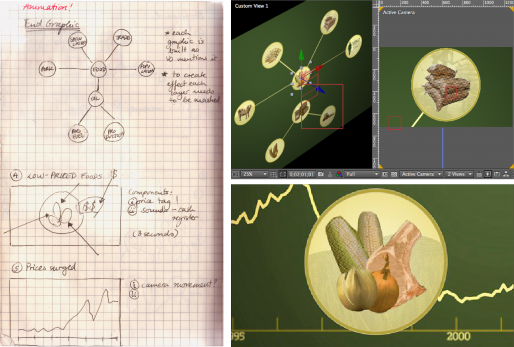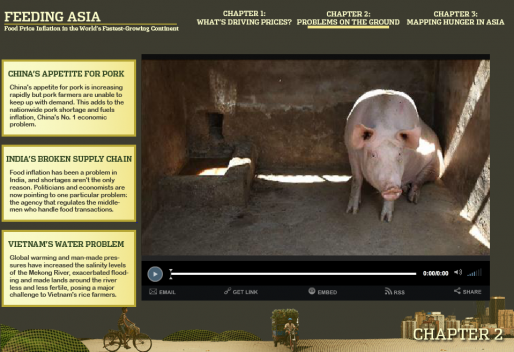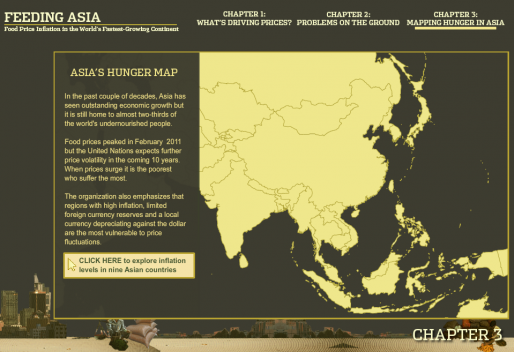Another blogpost I did for ONA. Please see it here: http://journalists.org/2012/01/30/video-editing-a-skill-worth-fine-tuning/
Throughout my time at the Wall Street Journal I edited a lot of videos that were shot by other reporters, often print reporters new to the joy of filmmaking.
This has taught me two things:
- How to become a better shooter (knowing what and how to shoot)
- How important editing is in storytelling
A lot of people concentrate on shooting when they take their first steps as video reporters. Rightly so. The footage you shoot is literally the stuff that videos are made of. But I do think that fewer people put the same amount of effort into improving their editing skills. And if there’s one thing I learned from editing a lot of footage from video beginners, it’s that editing can be crucial to making a story work.
Here are a few things I’ve learned from colleagues, friends and readings that I hope will help others improve their editing:
SEQUENCES AND ACTIONS — WHY B-ROLL SUCKS
Someone said to me once that I should forget about the concept of b-roll. And I really took it to heart.
In visual storytelling, we often rely on our radio track — meaning the voice over and interview sound bites — to tell our stories. A voice tells us all the facts of the story, as do soundbites from subjects. Often our first instinct is to throw related b-roll on top of what is being said. The idea is that the footage we see should correspond entirely to what we hear. It’s an approach that seems more natural to print journalists, who might find it easier to work with written words than with three hours of footage.
In its worst iteration it could end up being something like this:
But sometimes it’s worth thinking of an alternative way of using visual material. What my colleagues instilled in me was that a visual story arc was just as important. I would encourage budding filmmakers to start thinking of visual information in sequences that add up to actions — a visual narrative that runs parallel to the radio track narrative. These actions, in turn, tell the story of a place or person.
In this video I tried to use sequences (shot of hands, close-up of faces, medium shot of them in the kitchen, etc.) to visually show the process of making dim sum, serving it and guests eating it to tell the visual narrative of a restaurant visit.
(Of course, editing sequential footage also requires you to shoot in sequences. If you’re interested in what that entails, here’s a lecture that USC Annenberg’s Andrew Lih and I used when we instructed a workshop for print journalists at Hong Kong University.)
RHYTHM
Something else I’ve learned to appreciate is pacing and rhythm. Articles and infographics allow for panning, scanning and skimming, but an audio-visual story is linear and has to be consumed in one go. Therefore, the editor dictates the pace at which a viewer consumes a story. Rhythm and pacing are essential to delivering information in a digestible way.
Pauses in your radio track can help let your video “breathe.” Don’t cut so tightly to the script. Shots with natural sound can be a nice, non-aural introduction, interlude or outro to an interview bite. You can also use pauses to emphasize moments: If your subject or narration has just presented the viewer with a complex idea or an emotional statement, it might help to give the viewer a second or two to digest what he or she just heard. It’s the short beat that the comedian waits for after the punchline; the moment you gasp right after you’ve been gripped by an emotional experience.
Another way in which rhythm is used is to express a certain atmosphere. Quick cuts can express anxiety, stress or excitement, while keeping a long shot can be very soothing.
Here’s a video that employs different styles of editing quite beautifully — first to show the fast-paced life in Hong Kong and then to show how bee-keeping brings serenity to the subject of the video:
THE GUYS IN HOLLYWOOD
Most of these thoughts were jump-started when I first read Walter Murch’s “In the Blink of an Eye.” He’s an Academy-Award-winning editor who’s cut Hollywood blockbusters such as The Godfather and The English Patient. He also is the only author I’ve read so far who’s written about his philosophical approach to editing, although there are a few other books I’m hoping to check out soon (On Film Editing, Towards a Theory of Montage).
It might also help to familiarize yourself with the vocabulary editors use. They can give you a concrete definition of cuts you might already be doing, but also provide a better understanding of why they work.
This is not to say that we should adopt Hollywood’s stylistic devices without thinking about how and why we use them. Using cinematic styles can be controversial in the world of journalism. But it’s still helpful to know what visual conventions are out there and when it’s good to employ them.
PRACTICE!
Getting better is, of course, always the result of hard work and practice. Cutting dozens and dozens of videos has not only made me a faster editor, but it also has helped me find different editing styles and methods that I can apply to different stories.
I would also highly recommend getting practice outside journalism. It’s healthy to break outside the mold to experiment with a project that doesn’t necessarily have to inform audiences. You could challenge yourself to make a video that employs no interviews and no voices — just visual information.
With that said I’d like to leave you with a short video I did for a film collective I’m part of. It’s a visual interpretation of William Carlos Williams’ poem “This Is Just to Say”:





